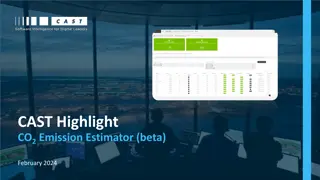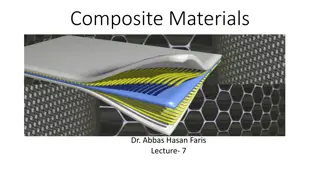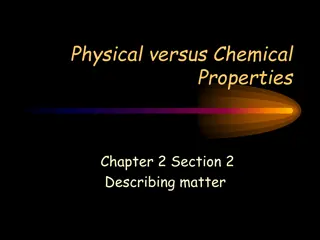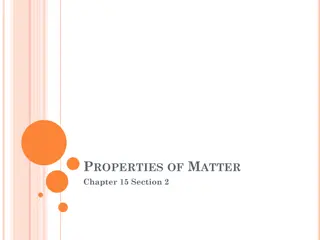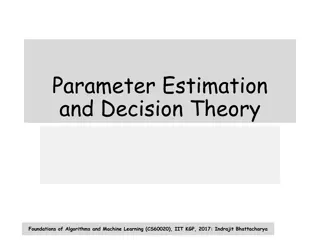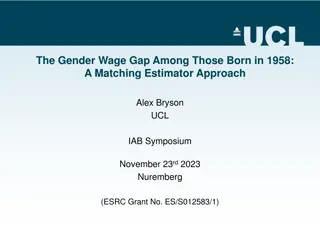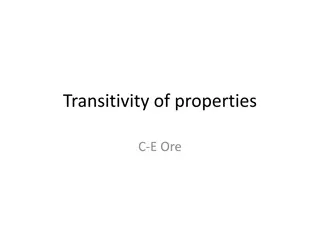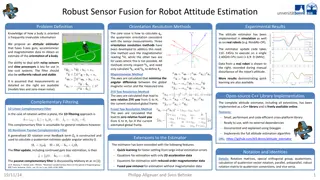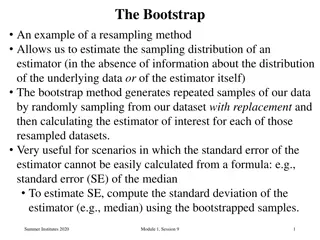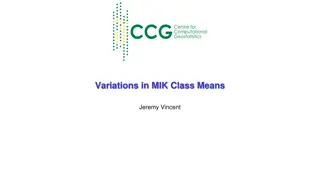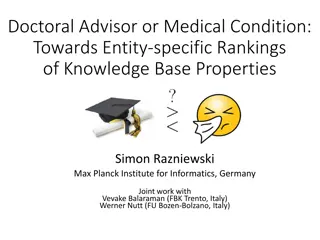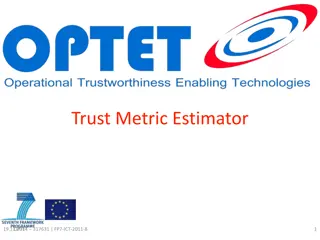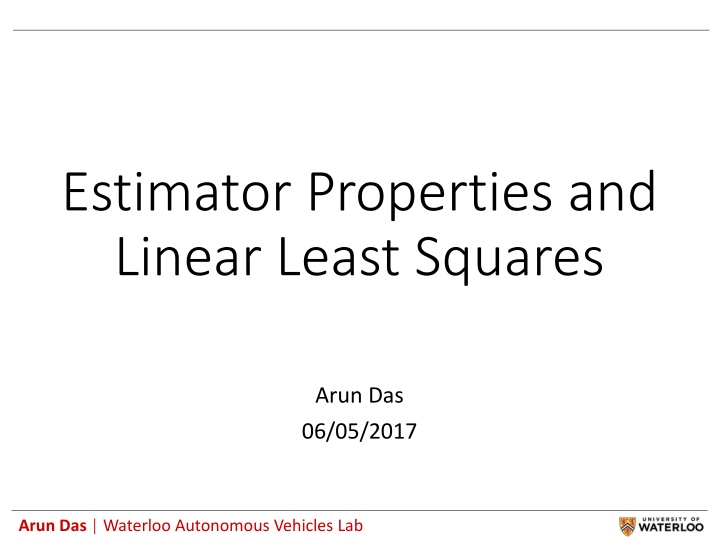
Estimator Properties and Cramer Rao Bounds for Efficient Estimation
Dive into the world of estimator properties, unbiased estimators, Cramer Rao Lower Bound, and graphical interpretations for efficient estimation in statistical analysis. Explore key concepts like variance, expected value, and the Cauchy-Schwarz inequality with insights from Arun Das at Waterloo Autonomous Vehicles Lab.
Download Presentation

Please find below an Image/Link to download the presentation.
The content on the website is provided AS IS for your information and personal use only. It may not be sold, licensed, or shared on other websites without obtaining consent from the author. If you encounter any issues during the download, it is possible that the publisher has removed the file from their server.
You are allowed to download the files provided on this website for personal or commercial use, subject to the condition that they are used lawfully. All files are the property of their respective owners.
The content on the website is provided AS IS for your information and personal use only. It may not be sold, licensed, or shared on other websites without obtaining consent from the author.
E N D
Presentation Transcript
Estimator Properties and Linear Least Squares Arun Das 06/05/2017 Arun Das | Waterloo Autonomous Vehicles Lab
Definitions| Important concepts Expected Value: Variance Cauchy Schwarz inequality Arun Das | Waterloo Autonomous Vehicles Lab
Properties of Estimators| Bias The estimator Bias is defined as: Called unbiased if: Let s do an example with the sample mean Arun Das | Waterloo Autonomous Vehicles Lab
Estimation| How Good Can the Estimate Be? Suppose we have an unbiased estimator Let s manipulate the above equation a bit Arun Das | Waterloo Autonomous Vehicles Lab
Definitions| Important concepts Expected Value: Variance Cauchy Schwarz inequality Log identity Arun Das | Waterloo Autonomous Vehicles Lab
Cramer Rao Lower Bound| We have just derived the Cramer Rao Lower Bound Bounds the variance of the estimator as a function Of the derivative of the log likelihood function An estimator that meets this bound is called Efficient Arun Das | Waterloo Autonomous Vehicles Lab
Cramer Rao Lower Bound| Can also derive multivariate case: Where is called the Fisher Information Matrix Arun Das | Waterloo Autonomous Vehicles Lab
Cramer Rao Lower Bound| Graphical Interpretation Arun Das | Waterloo Autonomous Vehicles Lab
Cramer Rao Lower Bound| Graphical Interpretation More sharpness Less Variance High Information Less sharpness High Variance Lower Information Arun Das | Waterloo Autonomous Vehicles Lab
CRLB| Graphical Interpretation Estimator Variance has inverse relationship to curvature of log likelihood! Arun Das | Waterloo Autonomous Vehicles Lab
Linear Least Squares| Problem Setup Suppose we have an overdetermined system of equations Measurements Measurement Model State Arun Das | Waterloo Autonomous Vehicles Lab
Linear Least Squares| Problem Setup No exact solution, so we want to define a cost function that allows us to best fit the model to the data Arun Das | Waterloo Autonomous Vehicles Lab
Linear Least Squares| Problem Setup No exact solution, so we want to define a cost function that allows us to best fit the model to the data Let s pick squared deviation of the measurements from the modelled measurements Arun Das | Waterloo Autonomous Vehicles Lab
Linear Least Squares| Solution Expanding out the quadratic term: Note that: and is scalar. Thus: Arun Das | Waterloo Autonomous Vehicles Lab
Linear Least Squares| Solution Take derivative and set equal to zero: Result is least-squares normal equations Arun Das | Waterloo Autonomous Vehicles Lab
Linear Least Squares| Connection to Maximum Likelihood Recall maximum likelihood: We can model the measurements as follows: Which gives us the following likelihood function we want to maximize Arun Das | Waterloo Autonomous Vehicles Lab
Linear Least Squares| Connection to Maximum Likelihood Which gives us the following likelihood function we want to maximize Maximizing the above is equivalent to minimizing: Arun Das | Waterloo Autonomous Vehicles Lab
Linear Least Squares| Connection to Maximum Likelihood Which gives us the following likelihood function we want to maximize Maximizing the above is equivalent to minimizing: Which is also our quadratic (weighted) least squares cost! So, for Gaussian Likelihood, the least squares estimate is also the maximum likelihood estimate! Arun Das | Waterloo Autonomous Vehicles Lab
Linear Least Squares| Linear Least Squares and CRLB Possible to show that the Least Squares estimate is efficient, with information matrix: Arun Das | Waterloo Autonomous Vehicles Lab
Homework| Show that these two forms of the CRLB are equivalent Arun Das | Waterloo Autonomous Vehicles Lab


